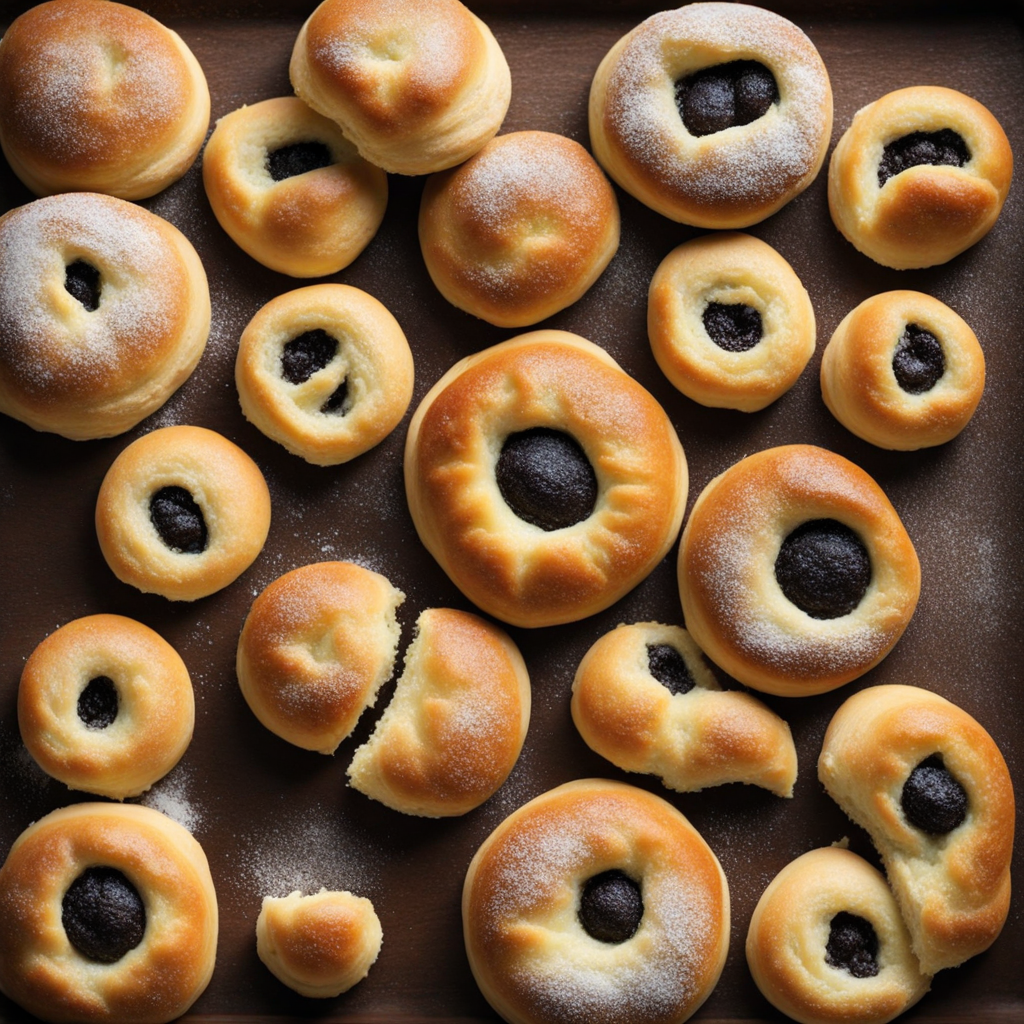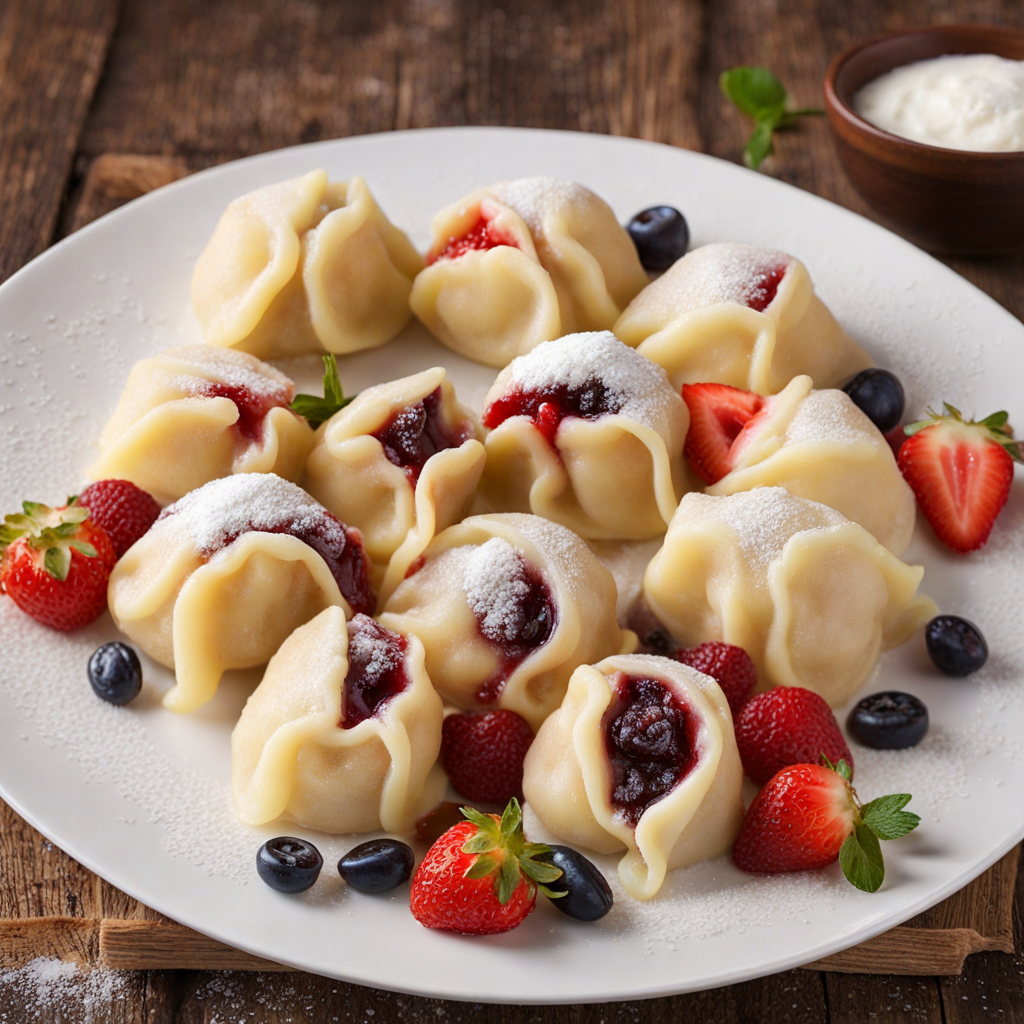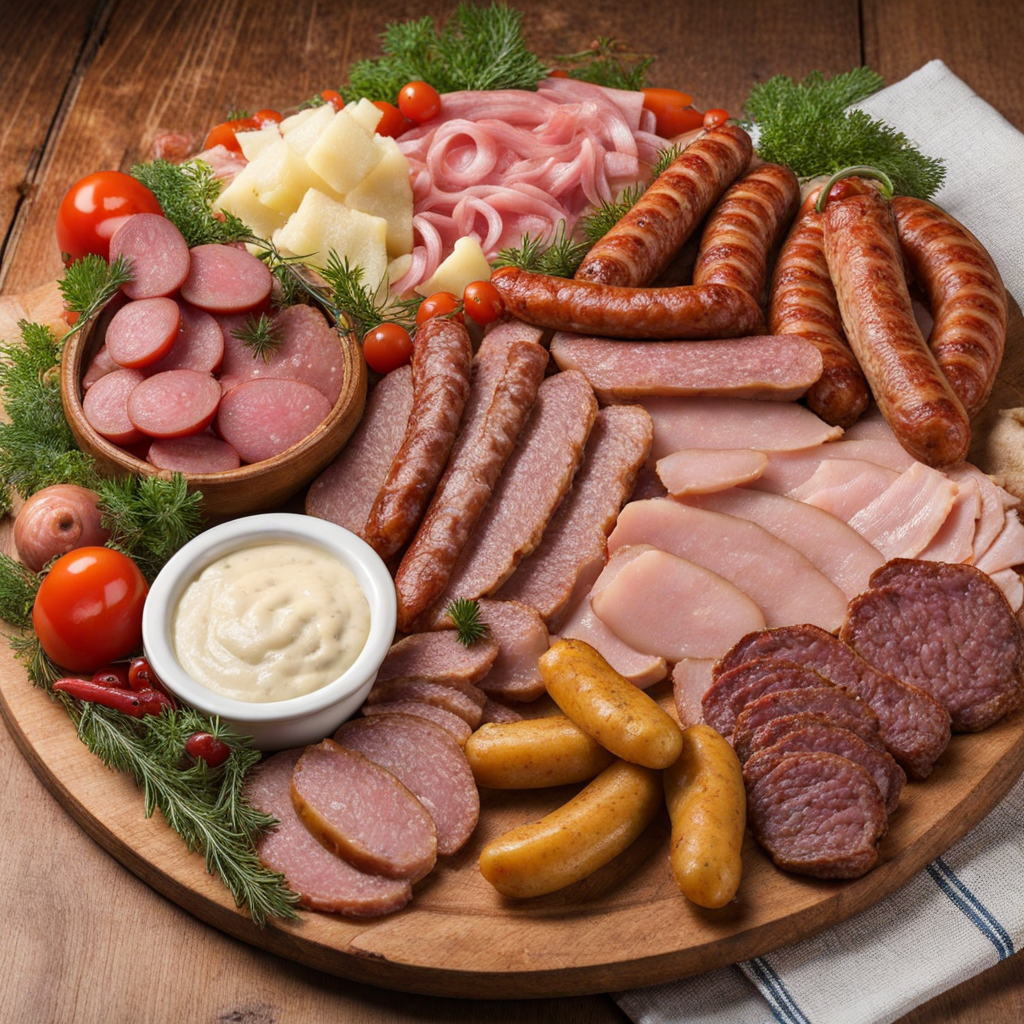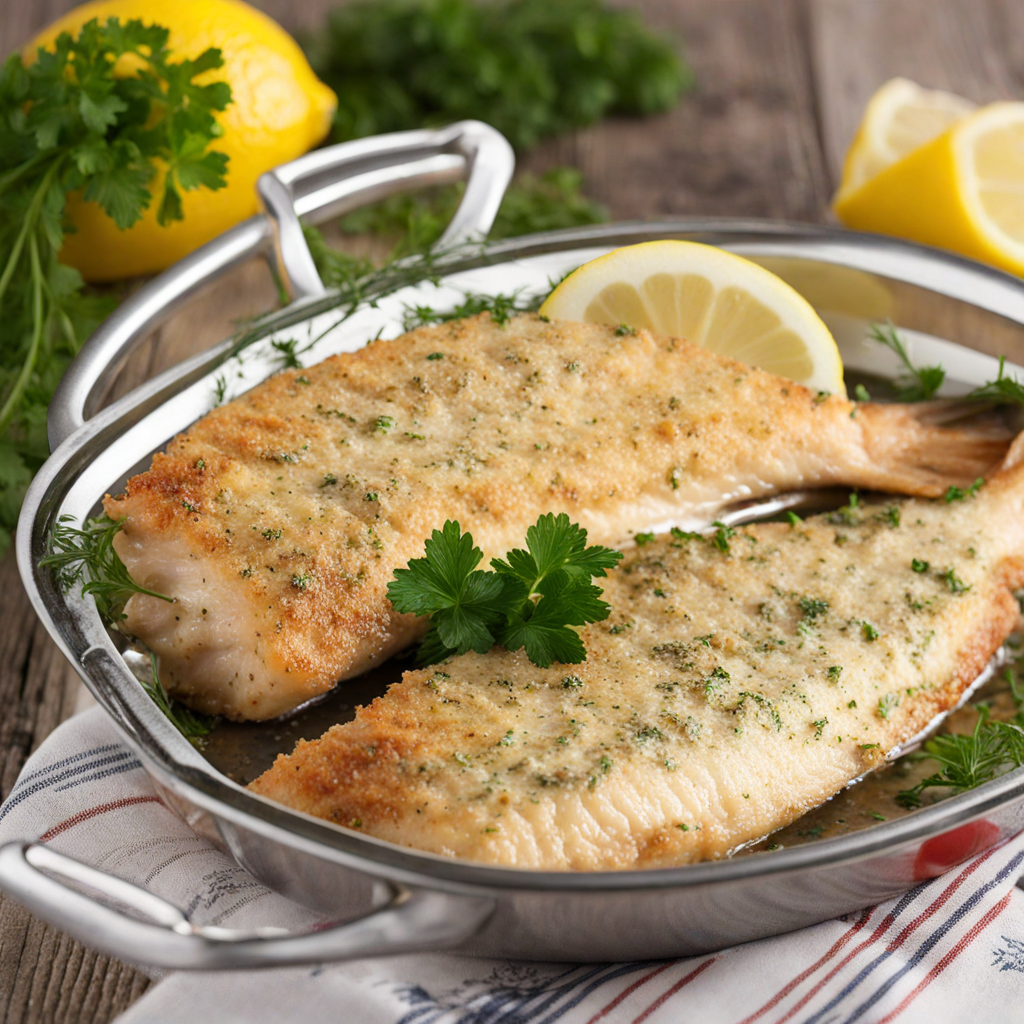Kolache
Kolache is a delightful pastry originating from the Czech Republic, known for its soft, pillowy dough that encases a variety of rich fillings. Traditionally, the dough is made from a combination of flour, sugar, butter, and yeast, which gives it a tender texture and slightly sweet flavor. These pastries are often shaped into small rounds or squares, with an indentation created in the center to hold the filling, making them visually appealing and perfect for a sweet treat or a snack any time of day. In terms of fillings, kolache offers a diverse array of flavors that can cater to both sweet and savory palates. Common fillings include fruits like poppy seeds, apricots, cherries, and blueberries, as well as creamy cheeses or even savory options such as sausage or cabbage. Each bite reveals a burst of flavor that perfectly complements the soft, buttery pastry, creating a harmonious balance that is both comforting and satisfying. Kolache are not only a staple in Czech cuisine but have also found a place in the hearts of food lovers worldwide. Often enjoyed fresh from the oven, they can be served warm or at room temperature, making them an excellent addition to brunches, coffee breaks, or family gatherings. With their nostalgic flavors and inviting aroma, kolache embodies the essence of Czech culinary tradition, inviting you to savor each delicious bite and explore the rich cultural heritage that accompanies this beloved pastry.
How It Became This Dish
The History of Koláče: A Czech Culinary Treasure #### Origins Koláče (singular: koláč) is a traditional Czech pastry that has transcended time and borders, becoming emblematic of Czech culture and cuisine. The origins of koláče can be traced back to the Slavic peoples of Central Europe, with historical references dating as far back as the 13th century. The name "koláč" itself derives from the Old Slavic word "kola," meaning "circle," which aptly describes the pastry's characteristic round shape. Originally, koláče were simple, unleavened breads that were often used in ceremonial contexts. They were baked to mark significant life events such as weddings, harvests, and religious celebrations. The traditional preparation involved basic ingredients like flour, water, and salt, reflecting the agrarian lifestyle of early Slavic communities. As the Czech lands evolved, so too did the koláč, which began to incorporate more diverse ingredients. #### Cultural Significance Koláče holds a special place in Czech culture, symbolizing hospitality and communal spirit. They are often served during festive occasions, family gatherings, and holidays. The preparation and sharing of koláče is a cherished tradition, particularly during Easter and Christmas. In many Czech households, the making of koláče is a ritual that brings families together, reinforcing bonds through shared culinary experience. Moreover, koláče is more than just a pastry; it serves as a canvas for regional creativity and diversity. Different regions in the Czech Republic have their unique variations, often reflecting local tastes and available ingredients. For example, in Moravia, koláče may feature poppy seeds and sweet cheeses, while in Bohemia, fruit fillings like apricot or plum are more common. These regional distinctions have fostered a sense of pride among communities, with local bakers often competing to create the best koláče. #### Development Over Time As the centuries progressed, the recipe for koláče evolved significantly, paralleling changes in society, economy, and culinary practices. During the Renaissance, the introduction of yeast revolutionized baking, leading to a lighter, fluffier pastry. This advancement allowed bakers to experiment with fillings and toppings, leading to the sweet, pillowy koláče we know today. By the 19th century, with the rise of nationalism and a renewed interest in folk traditions, koláče became a symbol of Czech identity. The Czech National Revival movement emphasized the importance of preserving traditional customs, making koláče a culinary emblem of national pride. Cookbooks began to include recipes for koláče, and they became a staple in Czech households, with families passing down cherished recipes through generations. The 20th century brought about further transformations. The two World Wars and the subsequent establishment of communism in Czechoslovakia altered the landscape of food production and consumption. While traditional recipes persisted, the availability of ingredients fluctuated, leading to adaptations. Bakers learned to be resourceful, sometimes using less conventional fillings or working with limited supplies. Despite these challenges, koláče remained a beloved staple, often associated with home and comfort during difficult times. #### Modern Day Koláče Today, koláče has evolved into a culinary phenomenon that extends beyond the borders of the Czech Republic. With the wave of Czech immigration to the United States in the late 19th and early 20th centuries, the tradition of koláče was carried across the Atlantic. In regions with significant Czech-American populations, particularly in states like Texas, Nebraska, and Oklahoma, koláče gained popularity, often served at community events and festivals. American bakers have embraced koláče, leading to creative adaptations that reflect local tastes, such as adding chocolate or creating savory versions filled with cheese and meats. In contemporary Czech society, koláče continues to be a beloved treat, enjoyed both at home and in bakeries. Modern Czech bakers are experimenting with flavors, taking inspiration from global culinary trends while still honoring traditional recipes. The fusion of traditional and modern has given rise to innovative fillings such as matcha, Nutella, or even vegan options, appealing to a new generation of pastry lovers. #### Koláče Festivals and Celebrations In addition to its culinary significance, koláče has become a centerpiece of cultural celebrations. Numerous festivals dedicated to koláče are held throughout the Czech Republic and in Czech communities worldwide. These festivals celebrate not only the pastry itself but also the cultural heritage and artisanal skills of bakers. Visitors can enjoy a variety of koláče, participate in baking competitions, and engage in traditional folk music and dancing. In the Czech Republic, the "Koláče Festival" in the town of Hranice and the "Koláče and Wine Festival" in South Moravia are popular events that draw crowds eager to sample delicious pastries and partake in local traditions. These celebrations serve as an important reminder of the resilience and adaptability of Czech culture, showcasing the enduring legacy of koláče through the generations. #### Conclusion Koláče is more than just a pastry; it is a symbol of Czech identity, community, and tradition. From its humble beginnings as a simple bread to its status as a beloved cultural icon, koláče represents the rich tapestry of Czech history. The evolution of this pastry reflects broader societal changes while maintaining its roots in the agrarian past. As we savor koláče today, whether at a festive gathering or in a bustling bakery, we partake in a tradition that has been cherished for centuries. It is a testament to the power of food to connect us with our heritage and to bring people together, transcending cultural and geographical boundaries. Whether in its traditional form or in innovative adaptations, koláče remains a delicious embodiment of the Czech spirit, inviting all to enjoy a taste of history.
You may like
Discover local flavors from Czech Republic







